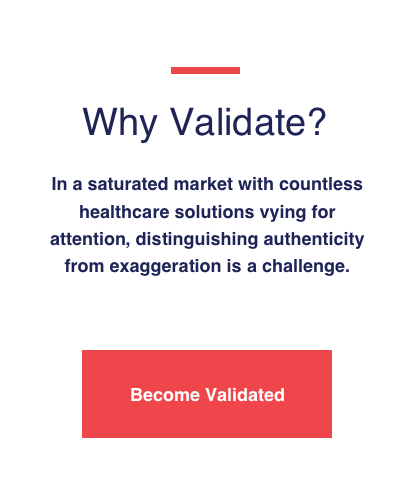Brian Klepper

At its core, America’s health care value crisis is really rooted in our system-wide failure to focus on managing quality. Health outcomes for specific conditions and procedures vary wildly across providers, health plans and markets. A highly regarded 2008 PricewaterhouseCoopers study estimated that more than half of US health care spending provides no value.
Our health system optimizes revenues, in part, through excessive care, meaning that many clinicians largely disregard quality, ignoring whether treatment pathways are right or founded in evidence. Compare US care patterns to those in other developed countries or to top performing domestic programs, and over-treatment is obvious. Putting medical errors aside, vast quantities of care are intentionally unnecessary, a problem so pervasive that, compared to other developed nations, we’ve come to consider our inflated procedural statistics normal. Half or more of all orthopedic surgeries are inappropriate. We administer cancer patients chemotherapy regimens that often lack proven efficacy. (Here’s a relevant quote from the linked article in JAMA Internal Medicine: “Our results show that most cancer drug approvals [by the FDA] have not been shown to, or do not, improve clinically relevant end points.”) Even after an abundance of evidence showing that coronary stents provide no significant benefit in stable heart patients, we implant thousands every day. And on and on.
When care does follow evidence, health outcomes and cost improvements can be dramatic. This is clear in the emerging crop of “high performance” health care organizations that consistently deliver better health outcomes and/or lower costs than conventional approaches. Typically, these firms’ founders are data- and evidence-driven, passionate and mission-driven, and they have high subject matter expertise in whatever niche they work. They have deconstructed some problem in that space and devised, then refined, solutions that are, in most cases, different than the conventional approach. They’re typically so confident about their ability to perform that they’re willing to guarantee their results, putting their fees at risk against the performance targets they claim they can achieve.
A striking example is Integrated Musculoskeletal Care (IMC), a Florida company that has generated breathtaking results. Led by two senior clinicians, they began as practitioners of Mechanical Diagnosis and Therapy (MDT), a credible medical discipline that is especially valued for the precision of its diagnostic approach. MDT has a reliable assessment model that allows clinicians to accurately isolate and identify the source of pain and, in most cases, classify or select the most appropriate care for musculoskeletal patients.
Academic studies have demonstrated MDT’s efficacy, but like nearly all of modern medicine, little or no quality management infrastructure has been in place to reveal in real time whether each intervention benefited, harmed or had no material impact on the patient.
So the IMC team built one. They adopted validated indices capable of measuring patient’s perceived pain, function and disability as a gold standard metric to measure clinical effectiveness. Every time they intervened with a patient, they recorded and watched the numbers. In most cases, patients responded positively. But when a patterns emerged that showed a less-than-desirable result, they rethought their model, course-corrected the treatment pathway and updated their protocols. And they did this over and over and over again. Over time, with repeated adjustments, their clinical model organically evolved. It was no longer MDT, but a different, fully fleshed out musculoskeletal disorder treatment methodology.
The results, developed over several hundred thousand patient encounters, have been compelling. Clinicians using IMC’s approach can appropriately intervene in 90 percent of musculoskeletal disorder cases. Compared with conventional treatment, pain drops dramatically, function with daily activities improves, and duration of suffering is reduced by half. Surgeries are reduced by two-thirds, images by half and injections by two-thirds. Recurrent events – the likelihood that a patient will have recurring, intensifying problems every year or so – drop by 60 percent. Cost typically is reduced by half, a result so strong that the company will financially guarantee a 25 percent reduction in musculoskeletal spending on the patients they touch.
Now consider this. This performance occurs in an area that consumes about 20-25 percent of all group health spending, and 60 percent of occupational health. It’s typically the most prevalent problem and the top spending category in any health system. IMC’s approach is essentially a better mousetrap, consistently delivering better health outcomes in about half the time and half the cost.
The fact that IMC has found a better way is overwhelmingly impressive. But the fact that they’ve gotten there, in large measure, by developing an approach that lets them, in real time, watch their own results and course correct as appropriate, is an achievement of staggering proportions.
IMC’s success begs an even bigger question about this perfectly logical but exceedingly rare effort. Why aren’t clinicians within every medical domain – cardiology, ophthalmology, gynecology, endocrinology, urology, neurology – following the same path? Isn’t there every reason to replicate their approach, clinical monitoring and improvement, a combination of Deming and the scientific method. Shouldn’t that accelerate clinical effectiveness? Shouldn’t that make quality the most important vector in medicine? And isn’t it likely that that would make care far more efficient as well?
The quality we all claim to seek in American health care is sitting in pockets right in front of us. We only have to plant it in every medical domain, and watch health care’s beautiful flower bloom.
Brian Klepper is Executive Analyst and Editor at The Validation Institute.




